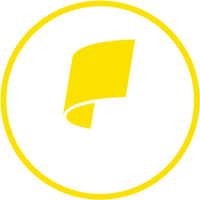Innovations in technology and the strategic evolution of human resource departments have caused many employers to transition to paperless HR processes. Handling, organizing and retaining paper documents costs companies time, money and space. Going paperless offers several advantages, including environmental sustainability, convenient document accessibility, and the reduction of costs and physical storage space. But before you start scanning and shredding your old files, there are a few aspects to consider.
First, it’s important to note that best practices regarding paper personnel files shouldn’t be abandoned. More specifically, you should separate personnel files into categories to limit access to Equal Employment Opportunity (EEO) protected characteristics, medical records, and other information that could be unfairly used in making employment decisions (i.e. hiring, promoting, transferring, terminating, etc.)
Next, although we haven’t seen regulations addressing electronic recordkeeping across all HR disciplines, the US Department of Labor has issued Final Rule guidance for documents governed by the Employee Retirement Income Security Act (ERISA), which gives employers important points to consider when transitioning to an electronic filing system.
According the DOL, employers should ensure that:
(1) Its electronic recordkeeping system has reasonable controls to ensure the integrity, accuracy, authenticity and reliability of the records kept in electronic form.
(2) Its electronic records are maintained in reasonable order and in a safe and accessible place, and in such manner as they may be readily inspected or examined (for example, the recordkeeping system should be capable of indexing, retaining, preserving, retrieving and reproducing the electronic records).
(3) Electronic records are readily convertible into legible and readable paper copy as may be needed to satisfy reporting and disclosure requirements.
(4) Its electronic recordkeeping system is not subject, in whole or in part, to any agreement or restriction that would, directly or indirectly, compromise or limit a person’s ability to comply with any reporting and disclosure requirement.
(5) Adequate records management practices are established and implemented (for example, following procedures for labeling of electronically maintained or retained records, providing a secure storage environment, creating back-up electronic copies and selecting an off-site storage location, observing a quality assurance program evidenced by regular evaluations of the electronic recordkeeping system including periodic checks of electronically maintained or retained records, and retaining paper copies of records that cannot be clearly, accurately or completely transferred to an electronic recordkeeping system.[1]
The primary takeaway is – an electronic recordkeeping system can save your company time, money and space, but you must ensure that your electronic documents are organized correctly, are legible when accessed and are equally as secure as their paper predecessors.
Our friends at PTG have written a blog about Protecting Your Company from CEO Impersonation Attacks. Read about that here.
[1] www.dol.gov/ebsa/regs/fedreg/final/2002008499.pdf









